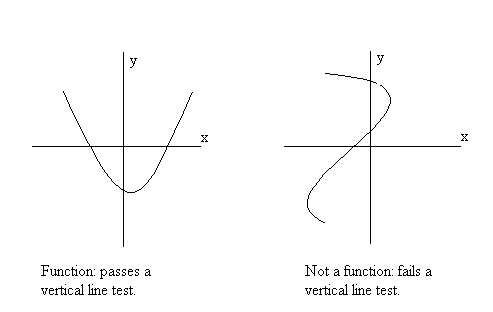To ensure that we take the square root of a negative number we require that 5 - x ³ 0 OR x £ 5.Example: Determine the domain of f(x) = 1/(x2 + x - 2).
To avoid division by zero we factor the denominator f(x) = 1/((x + 2)(x - 1)) and require that x ¹ -2, 1.Example: Given the function f(x) = 2 x2 + x - 3 compute f(0) and f(2).
This is an exercise in using function notation. Simply substitute in 0 for x and substitute in 2 for x. f(0) = 2 02 + 0 - 3 = -3 f(2) = 2 22 + 2 - 3 = 7Example: Determine if the following graphs represent functions.

| Table of Contents | | Previous | | Next |